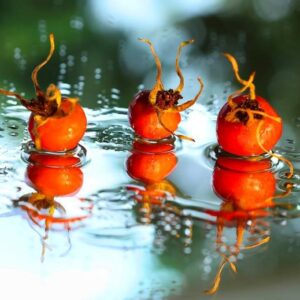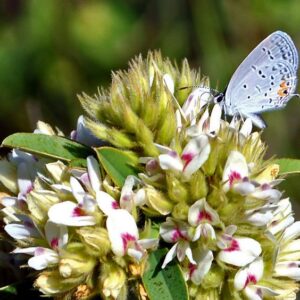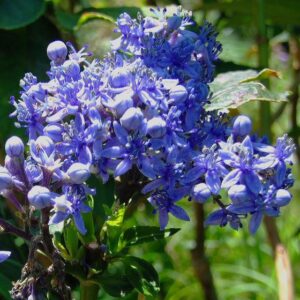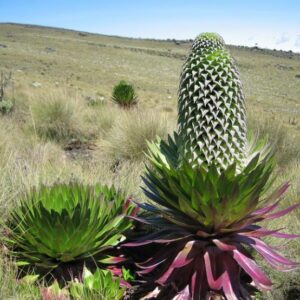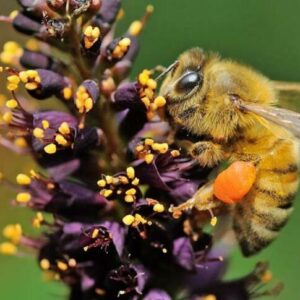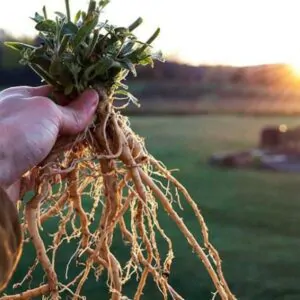$4.45
/ per pack
Choose seeds per pack:
Botanical name: Jatropha curcas
Common name: Barbados Nut, Physic Nut, Poison Nut, Bubble Bush, Purging Nut
Kingdom: Plantae
Clade: Tracheophytes
Clade: Angiosperms
Clade: Eudicots
Clade: Rosids
Order: Malpighiales
Family: Euphorbiaceae
Genus: Jatropha
Species: J. curcas
Jatropha curcas is a species of flowering plant in the spurge family, Euphorbiaceae, that is native to the American tropics, most likely Mexico and Central America. It is originally native to the tropical areas of the Americas from Mexico to Argentina, and has been spread throughout the world in tropical and subtropical regions around the world, becoming naturalized or invasive in many areas. The specific epithet, “curcas”, was first used by Portuguese doc Garcia de Orta more than 400 years ago. Common names in English include physic nut, Barbados nut, poison nut, bubble bush or purging nut. In parts of Africa and areas in Asia such as India it is often known as “castor oil plant” or “hedge castor oil plant”, but it is not the same as the usual castor oil plant, Ricinus communis (they are in the same family but different subfamilies).
J. curcas is a semi-evergreen shrub or small tree, reaching a height of 6 m (20 ft) or more. It is resistant to a high degree of aridity, allowing it to grow in deserts. It contains phorbol esters, which are considered toxic. However, edible (non-toxic) varieties native to Mexico also exist, known by the local population as piñón manso, xuta, chuta, aishte, among others. J. curcas also contains compounds such as trypsin inhibitors, phytate, saponins and a type of lectin known as curcin.
The seeds contain 27–40% oil (average: 34.4%) that can be processed to produce a high-quality biodiesel fuel, usable in a standard diesel engine. Edible (non-toxic) varieties, as those developed by selection by ethnic Mexican natives in Veracruz can be used for animal feed and food.
Cultivation is uncomplicated. Jatropha curcas grows in tropical and subtropical regions. The plant can grow in wastelands and grows on almost any terrain, even on gravelly, sandy and saline soils. It can thrive in poor and stony soils, although new research suggests that the plant’s ability to adapt to these poor soils is not as extensive as had been previously stated. Complete germination is achieved within 9 days. Adding manure during the germination has negative effects during that phase, but is favorable if applied after germination is achieved. It can be propagated by cuttings, which yields faster results than multiplication by seeds.
The flowers only develop terminally (at the end of a stem), so a good ramification (plants presenting many branches) produces the greatest amount of fruits. The plants are self-compatible. Another productivity factor is the ratio between female and male flowers within an inflorescence, more female flowers mean more fruits. Jatropha curcas thrives on a mere 250 mm (10 in) of rain a year, and only during its first two years does it need to be watered in the closing days of the dry season. Ploughing and planting are not needed regularly, as this shrub has a life expectancy of approximately forty years. The use of pesticides is not necessary, due to the pesticidal and fungicidal properties of the plant. It is used in rural Bengal for dhobi itch (a common fungal infection of the skin).
While Jatropha curcas starts yielding from 9–12 months time, the best yields are obtained only after 2–3 years time. The seed production is around 3.5 tons per hectare (seed production ranges from about 0.4 t/ha in the first year to over 5 t/ha after 3 years). If planted in hedges, the reported productivity of Jatropha is from 0.8 to 1.0 kg of seed per meter of live fence.
| Weight | N/A |
|---|
